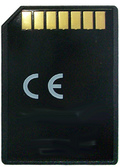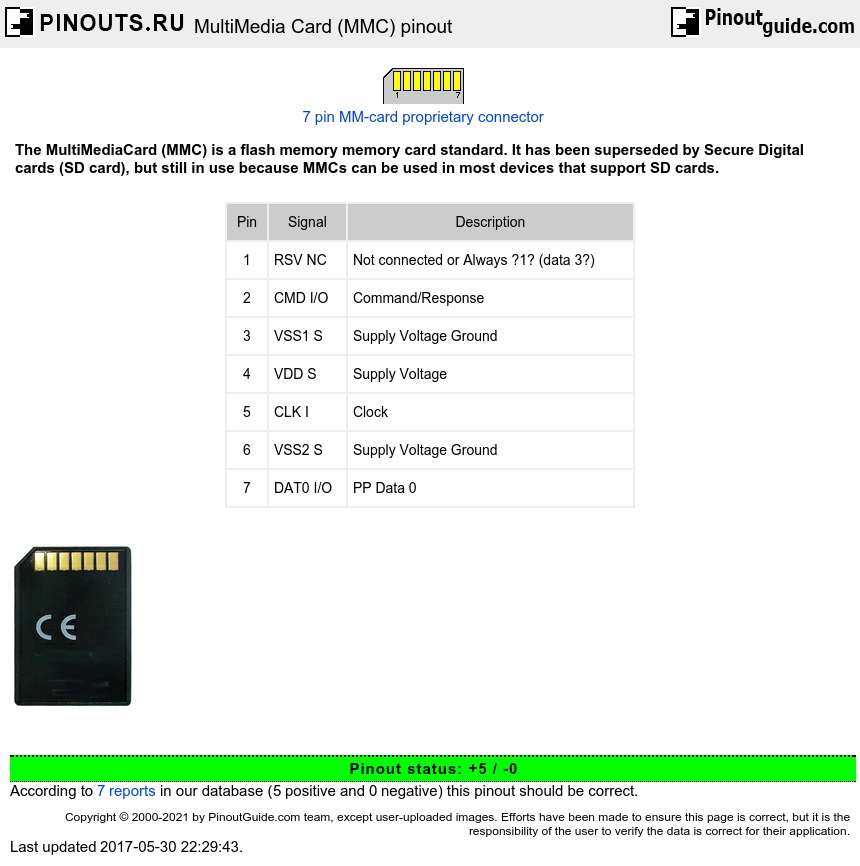The MultiMedia Card communication is based on serial bus designed to operate in a low voltage range.
| Pin | Signal | Description |
| 1 | RSV NC | Not connected or Always ?1? (data 3?) |
| 2 | CMD I/O | Command/Response |
| 3 | VSS1 S | Supply Voltage Ground |
| 4 | VDD S | Supply Voltage |
| 5 | CLK I | Clock |
| 6 | VSS2 S | Supply Voltage Ground |
| 7 | DAT0 I/O | PP Data 0 |
- CLK - with each cycle of this signal an one bit transfer on the command and data lines is done. The frequency may vary between 0-20MHz.
- CMD - is a bidirectional command channel used for card initialization and data transfer commands.
- DAT - is a bidirectional data channel. The DAT signal operates in push-pull mode. Only one card or the host is driving this signal at a time.
For compatibility to existing controllers the cards may offer,in addition to the MultiMedia Card mode, an alternate general-purpose synchronous serial interface which is based on the SPI (Serial Peripheral Interface) standard.
| Pin | Signal | Description |
|---|---|---|
| 1 | CS | Chip select (neg. true) |
| 2 | DI | DATA in |
| 3 | Vss | Ground |
| 4 | Vcc | Power supply |
| 5 | SCLK | Clock |
| 6 | Vss2 | Ground |
| 7 | DO | DATA out |
The MultiMediaCard card identification and addressing methods are replaced by a hardware Chip Select (CS) signal. For every command, a card (slave) is selected by asserting the CS signal (active low). The CS signal must be continuously active for the duration of the SPI transactions. The MM card bidirectional CMD and DAT lines are replaced by unidirectional DATA in and DATA out signals (single and multiple block read/write commands are supported).
MMCs are available in sizes up to and including 32 GB.



 correct
correct incorrect
incorrect